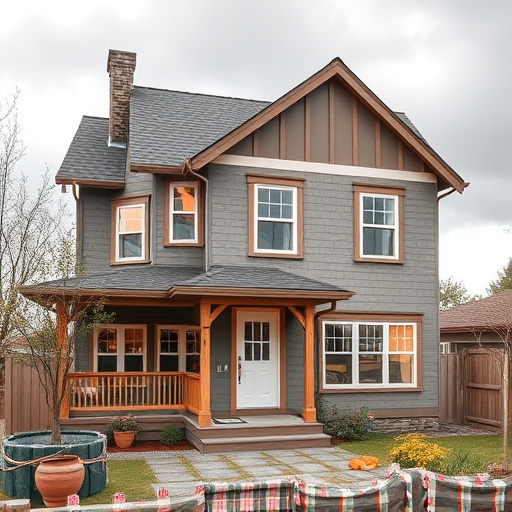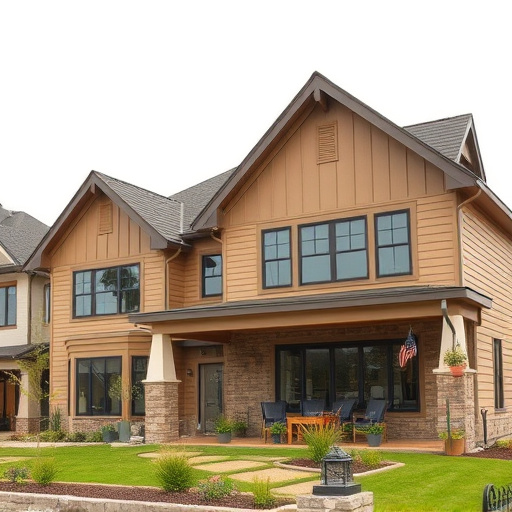Incorporating green certifications like LEED and WELL Building Standard in commercial remodeling drives sustainability, reduces energy costs, improves indoor air quality, and enhances property values. These certifications guide eco-friendly material selection, efficient water usage, daylighting, and well-being features, benefiting both the environment and long-term project success. Choosing strategic certifications like LEED, ENERGY STAR, and WRI ratings for specific projects attracts environmentally conscious clients and strengthens your reputation in sustainable commercial remodeling.
Green certifications are transforming the landscape of commercial remodeling, prioritizing sustainability and efficiency. This article guides contractors and businesses through the essential certifications for eco-conscious commercial spaces. We explore the benefits of renowned programs like LEED and BREEAM, providing a step-by-step approach to selecting the right credentials. By understanding these certifications, professionals can enhance project value, attract environmentally conscious clients, and contribute to a greener future in commercial remodeling.
- Understanding Green Certifications for Commercial Spaces
- Common Certifications and Their Benefits in Remodeling
- Choosing Certifications: A Step-by-Step Guide for Contractors
Understanding Green Certifications for Commercial Spaces

In the realm of commercial remodeling, incorporating sustainable practices has become a game-changer. Green certifications offer a roadmap for creating environmentally friendly spaces, ensuring both efficiency and aesthetics. These certifications are particularly crucial in balancing the demands of modern businesses while minimizing environmental impact, especially when considering the frequent need for floor replacements or multiple room remodels.
By opting for green-certified materials and methods, commercial renovation projects can reduce energy consumption, improve indoor air quality, and minimize waste generation. This approach not only contributes to a healthier work environment but also aligns with the growing demand from environmentally conscious consumers and tenants. Whether it’s an office space, retail store, or industrial facility, understanding these certifications allows for informed decisions during residential renovations or any-scale commercial remodeling projects.
Common Certifications and Their Benefits in Remodeling

In the realm of commercial remodeling, integrating green certifications offers a multitude of benefits, from enhanced environmental stewardship to improved property values. Certifications like LEED (Leadership in Energy and Environmental Design) have become industry standards, guiding contractors and designers towards sustainable practices. For instance, LEED certification encourages the use of eco-friendly materials in construction, prioritizes efficient water usage, and promotes optimal daylighting—all of which contribute to a healthier indoor environment for occupants and reduce operational costs over time.
Beyond LEED, other notable certifications like WELL Building Standard focus on improving air quality, enhancing flexibility in space design, and incorporating features that support well-being, particularly in commercial spaces such as offices and retail stores. For residential renovations or kitchen and bath remodels, green certifications also apply, ensuring that projects meet environmental standards while potentially increasing the property’s appeal for future buyers. Whether undertaking a multiple room remodel or a single-space renovation, these certifications not only benefit the environment but also serve as a strategic investment in the long-term success of any commercial project.
Choosing Certifications: A Step-by-Step Guide for Contractors

Choosing the right green certifications for your commercial remodeling projects is a strategic move that can enhance your reputation and appeal to environmentally conscious clients. Here’s a step-by-step guide for contractors navigating this process. First, commercial remodeling projects should aim for certifications that validate energy efficiency and sustainable building practices. Look into LEED (Leadership in Energy and Environmental Design) credentials, which are globally recognized and cover various project types. For specific areas like home additions or whole house remodels, consider ENERGY STAR ratings for products and systems, ensuring compliance with strict energy performance guidelines.
Next, focus on interior painting certifications that prioritize low-VOC (volatile organic compound) paints and safe disposal methods. Look for credentials from reputable organizations that promote healthier indoor environments. Additionally, for projects involving significant renovations or new constructions, consider WRI (World Green Building Council) ratings which integrate environmental, social, and economic sustainability criteria. Remember, staying informed about the latest green certifications not only benefits your clients but also positions you as an industry leader in sustainable commercial remodeling.
In the realm of commercial remodeling, integrating green certifications is a strategic move that not only enhances sustainability but also offers numerous benefits, from cost savings to improved building performance. By following a step-by-step guide and understanding the right certifications, contractors can effectively contribute to eco-friendly practices without compromising quality or functionality. Embracing these standards is a vital step towards creating vibrant, energy-efficient spaces that benefit both businesses and the environment in today’s sustainable landscape.














